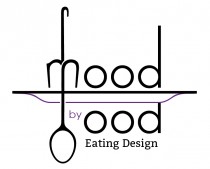Some collaborations spring out at the right time, fortuitious coincidence, perhaps. During the exploration phase of the project one of the many aspects that held my mind was colour, blame it on being a designer (:P) but i knew that had i an opportunity to highlight the colour of various foods i wouldn’t turn it down.
So when Holi came around it seemed perfect timing that Jasmeet asked me to collaborate on a project for his Project on Teaching for encouraging Multiple Intelligences in Children christened “Tinkerable”. The brief was to design an experience for children to think openly and let them explore their creativity in a medium that was completely new to their notion of an Art Class, where they would not be restricted to replicating a teacher’s drawing from a board.
Holi is a festival of colours, a celebration of spring and youth, with much gaiety, fanfare and ‘masti’. Colours are a recurrent theme with food – in fact mankind’s first pigments, dyes and paints came from plants, berries and fruits. Salad’s are limp and tasteless without bursting colour; dull shades are nature’s way of telling us things are rotten or unfit for consumption anyway.
Holi is a uniquely Indian festival, crowded and loud (both the colours and the noise), played out in the streets with excitement and relish. Holi is a time when many taboos are laid to rest – people douse each other with colour, riotous celebrations block off streets, teasing girls isn’t frowned upon much and Marijuana is consumed publicly! Holi is also a festival where everyone is child-like again, if only for a day, in fact children are at the forefront of Holi celebrations. It is the essence of spring – love and innocence, brightness and happiness.
Mythologically, Holi is a commemoration of Vishnu’s rescue of his ardent devotee Prahlad from his tortuous Raksash father Hiranyakashyapa. Vishnu arrives as the Man-Lion – Narsimha – who violently destroys the evil King to stop his quest for supreme power. A Holi is also an effigy burnt in remembrance of the pyre which the King had tried to burn his son in but was saved due to the resultant death of the King’s sister – Holika.
Salads and raw vegetables are frequently challenges for young children to conquer and regularly invite protests for more appreciable fare. Think about your own childhood? Most of us were too pre-occupied with Fast Food or packaged snacks. While it is a common stereotype to portray kids playing with their food, chasing veggies around the plate, i think there stands atleast a testament to our parents telling us not to play with our food – a taboo that every child has sought to break when no one is watching or when Karela’s are served.
From all this tumble and noise: Monsters, Taboos, Fun and Colour were the main starting points for me to think of an experience for children – not only to celebrate Holi and tell the story of Hiranyakashyapa – but to help them overcome Personal Monsters that they may face, through art and play.
Since food is a highly tactile we asked Children to visually depict their personal monsters through a collage of salad vegetables chopped up into different elemental shapes so that they could build textures and feel the material they were using. In using elemental shapes, the children not only used the colour of the vegetables but were also building visual textures to flesh out their visualisation.
As the monster’s were built we narrated Prahlad’s story in parts, asking the children to help lead us with the parts they knew, while we filled in the gaps. While some depicted animals they were scared of and others their maternal grandfathers, a few constructed amazingly detailed renditions of the haunts of their imagination.
In India the concept of using dressings or condiments is considered a more affluent pursuit while salt, lemon juice or Chaat Masala are more common taste-makers when it comes to raw fruit and veg. So why not use condiments and natural flavours in bold colours and tastes (in moderation) to help the kids destroy their demons. Using an analogy of Vishnu’s Rajasic divine manifestation, as the Rajasic condiments made of different spices, we asked the children to make their salads more tasty & palatable and then destroy the monsters by eating them away!
In the end all that remained were stray bits of leaves and stalks a drop of dressing here and there, excited and thrilled kids and a new way to look at an art class. where u dont put the picture on your wall, but into your tummy and absorb into your memories, turning something feared into a tasty treat.
